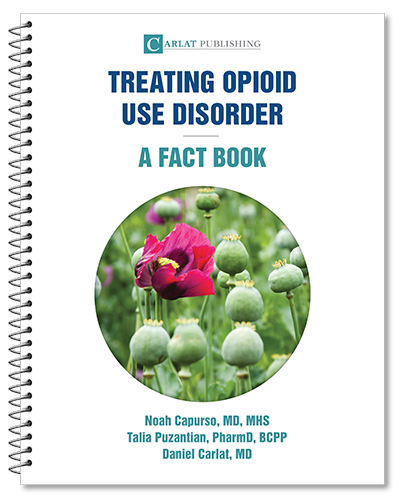Home » Guidelines for Switching From Methadone to Buprenorphine
Guidelines for Switching From Methadone to Buprenorphine
May 1, 2018
From The Carlat Addiction Treatment Report
Rehan Aziz, MD.
Dr. Aziz has disclosed that he has no relevant financial or other interests in any commercial companies pertaining to this educational activity.
REVIEW OF: Lintzeris N et al, J Addict Med 2018. doi:10.1097/ADM.0000000000000396
Recent guidelines published by the American Society of Addiction Medicine and nationally in Australia provide support for transferring patients from methadone to buprenorphine-naloxone (BNX). Patients may switch, thinking BNX is easier to discontinue or because of methadone side effects. The transition can be complicated by relapses or precipitated withdrawal when starting BNX. To minimize adverse events, the Australian guidelines recommend the following:
Lintzeris and colleagues studied the clinical feasibility of these guidelines. Involving 4 Australian specialist addiction centers, they conducted a prospective cohort study. They reviewed medical records. Outcomes assessed included guideline feasibility, transfer practices, and patient responses.
In all, 33 adult participants transferred, 9 from low-dose (LD) methadone (< 30 mg/day), 9 from medium-dose (MD) methadone (30–50 mg/day), and 15 from high-dose (HD) methadone (> 50 mg/day). Most HD transfers occurred in inpatient settings (93%), while most MD/LD transfers occurred in outpatient settings (67%). Inpatient stays were 2.2 days on average. Seventy percent of transfers were consistent with the guidelines. Most patients stabilized their BNX dose by day 3, with 96% using ≥ 12 mg/day. Overall, 79% (26/33) were still on BNX treatment at day 7 and were considered to have successfully transferred.
Three patients experienced precipitated withdrawal, all in the HD group, all returning to methadone. Three patients resumed methadone due to anxiety and poor sleep with BNX. One participant relapsed and used heroin for several days before resuming methadone.
CATR’s Take
Although this was a small sample, the findings are useful. They suggest most patients can successfully transfer from methadone to BNX when using the guidelines. Those transferring from HD methadone require inpatient settings and specialist supervision, while two-thirds of MD/LD methadone transfers may be suitable for outpatient clinics. Since all those patients failed transfer, it is important to avoid precipitated withdrawal.
Addiction TreatmentRecent guidelines published by the American Society of Addiction Medicine and nationally in Australia provide support for transferring patients from methadone to buprenorphine-naloxone (BNX). Patients may switch, thinking BNX is easier to discontinue or because of methadone side effects. The transition can be complicated by relapses or precipitated withdrawal when starting BNX. To minimize adverse events, the Australian guidelines recommend the following:
- Consider inpatient treatment for patients with significant medical comorbidities, unstable social conditions, or for those transferring from high methadone doses (> 50 mg/day)
- Gradually reduce methadone until the patient experiences mild to moderate opioid withdrawal symptoms between doses
- Stop methadone and begin monitoring regularly for opioid withdrawal, using measures such as the Clinical Opioid Withdrawal Scale (COWS)
- Start low-dose BNX at 2 mg, at least 24 hours after the last dose of methadone and after the patient experiences moderate opioid withdrawal (COWS score > 12), monitoring hourly afterwards for precipitated withdrawal
- Administer 6 mg after 1 hour; additional doses, 4–8 mg, are symptom-triggered
- On successive days: BNX dosage = the previous day’s dose plus additional symptom-triggered doses
Lintzeris and colleagues studied the clinical feasibility of these guidelines. Involving 4 Australian specialist addiction centers, they conducted a prospective cohort study. They reviewed medical records. Outcomes assessed included guideline feasibility, transfer practices, and patient responses.
In all, 33 adult participants transferred, 9 from low-dose (LD) methadone (< 30 mg/day), 9 from medium-dose (MD) methadone (30–50 mg/day), and 15 from high-dose (HD) methadone (> 50 mg/day). Most HD transfers occurred in inpatient settings (93%), while most MD/LD transfers occurred in outpatient settings (67%). Inpatient stays were 2.2 days on average. Seventy percent of transfers were consistent with the guidelines. Most patients stabilized their BNX dose by day 3, with 96% using ≥ 12 mg/day. Overall, 79% (26/33) were still on BNX treatment at day 7 and were considered to have successfully transferred.
Three patients experienced precipitated withdrawal, all in the HD group, all returning to methadone. Three patients resumed methadone due to anxiety and poor sleep with BNX. One participant relapsed and used heroin for several days before resuming methadone.
CATR’s Take
Although this was a small sample, the findings are useful. They suggest most patients can successfully transfer from methadone to BNX when using the guidelines. Those transferring from HD methadone require inpatient settings and specialist supervision, while two-thirds of MD/LD methadone transfers may be suitable for outpatient clinics. Since all those patients failed transfer, it is important to avoid precipitated withdrawal.
Issue Date: May 1, 2018
Table Of Contents
Recommended
Newsletters
Please see our Terms and Conditions, Privacy Policy, Subscription Agreement, Use of Cookies, and Hardware/Software Requirements to view our website.
© 2025 Carlat Publishing, LLC and Affiliates, All Rights Reserved.


_-The-Breakthrough-Antipsychotic-That-Could-Change-Everything.jpg?1729528747)



